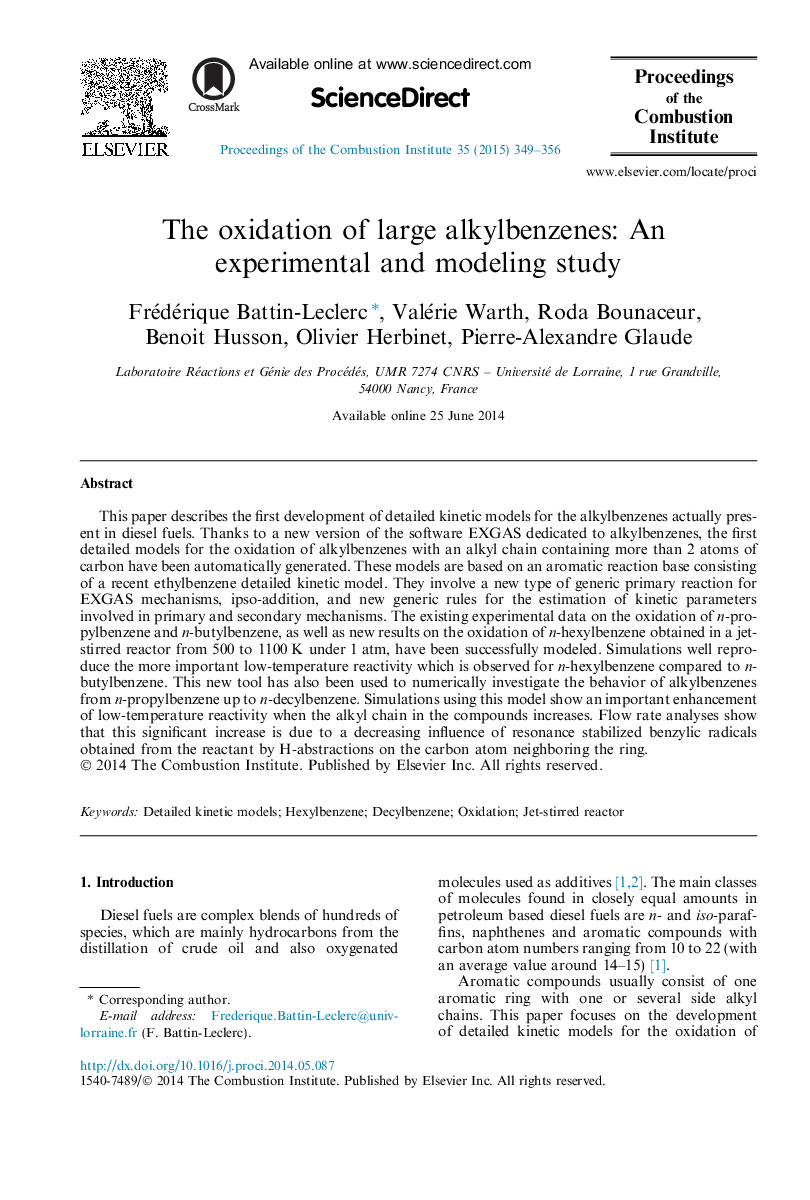| Article ID | Journal | Published Year | Pages | File Type |
|---|---|---|---|---|
| 6679267 | Proceedings of the Combustion Institute | 2015 | 8 Pages |
Abstract
This paper describes the first development of detailed kinetic models for the alkylbenzenes actually present in diesel fuels. Thanks to a new version of the software EXGAS dedicated to alkylbenzenes, the first detailed models for the oxidation of alkylbenzenes with an alkyl chain containing more than 2 atoms of carbon have been automatically generated. These models are based on an aromatic reaction base consisting of a recent ethylbenzene detailed kinetic model. They involve a new type of generic primary reaction for EXGAS mechanisms, ipso-addition, and new generic rules for the estimation of kinetic parameters involved in primary and secondary mechanisms. The existing experimental data on the oxidation of n-propylbenzene and n-butylbenzene, as well as new results on the oxidation of n-hexylbenzene obtained in a jet-stirred reactor from 500 to 1100Â K under 1Â atm, have been successfully modeled. Simulations well reproduce the more important low-temperature reactivity which is observed for n-hexylbenzene compared to n-butylbenzene. This new tool has also been used to numerically investigate the behavior of alkylbenzenes from n-propylbenzene up to n-decylbenzene. Simulations using this model show an important enhancement of low-temperature reactivity when the alkyl chain in the compounds increases. Flow rate analyses show that this significant increase is due to a decreasing influence of resonance stabilized benzylic radicals obtained from the reactant by H-abstractions on the carbon atom neighboring the ring.
Keywords
Related Topics
Physical Sciences and Engineering
Chemical Engineering
Chemical Engineering (General)
Authors
Frédérique Battin-Leclerc, Valérie Warth, Roda Bounaceur, Benoit Husson, Olivier Herbinet, Pierre-Alexandre Glaude,
